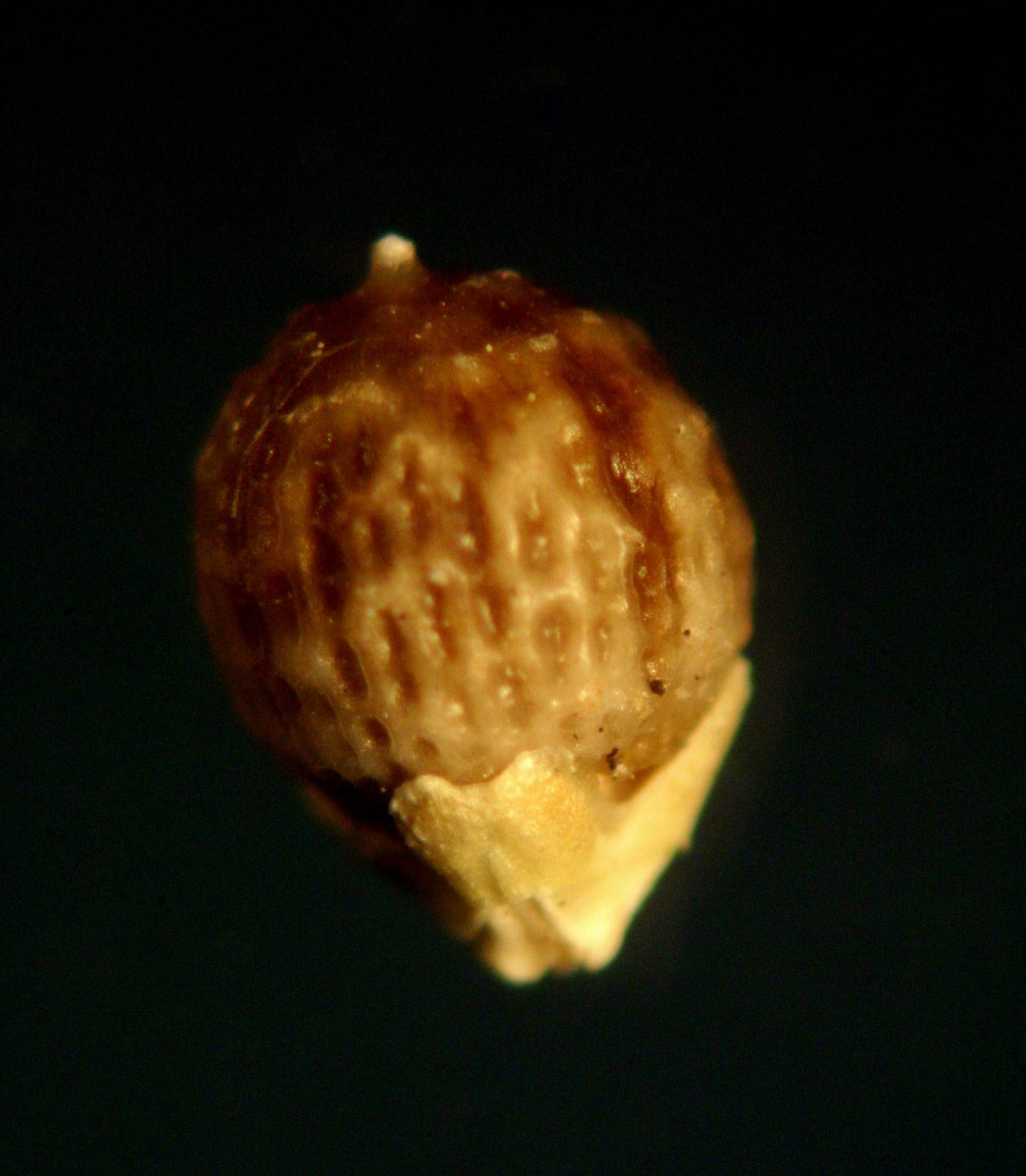Search
View the original page version
Scleria reticularis
|
|
|
|
Family: Cyperaceae
netted nutrush
[Scleria reticularis var. pumila Britton] |
Plants; roots purplish, fibrous; rhizomes short (in perennial forms). Culms solitary or in tufts, erect or spreading, slender, (6-)15-50 cm, glabrous or hairy. Leaves: sheaths often purple-tinged at base, sometimes somewhat winged, ribbed, glabrous or densely pubescent; contra-ligules rotund-obtuse, short; blades linear, flat, often ribbed, obtuse, shorter than or equaling culm, 1-3.5 mm wide, glabrous or occasionally margins and veins abaxially scabrous. Inflorescences axillary and terminal, paniculate; panicles compact, 8-25 mm, lateral clusters sessile or on short erect peduncles to 20(-90) mm; bracts subtending inflorescence leaflike, distalmost lateral bract 3/4 as long as to exceeding terminal internode. Spikelets bisexual or unisexual; staminate spikelets 2-3 mm, pistillate spikelets 3-4(-5) mm; staminate scales lanceolate; pistillate scales ovate-lanceolate, apex acuminate. Achenes gray or brownish and/or with dark interangular lines and little pubescence, globose to ovoid, 1.5-2 mm, apex umbonate, surface reticulate to completely smooth, somewhat verrucose in some forms, reticulations pubescent with tufts of yellowish hairs; hypogynium distinctly 3-lobed, lobes ovate-lanceolate, apex obtuse, sometimes emarginate. Fruiting summer-fall. Moist or wet sandy or sandy-peaty soil of pond and lake margins, wet savannas, and moist swales; 0-500 m; Ala., Conn., Del., Fla., Ga., Ind., Md., Mass., Mich., Miss., N.H., N.J., N.Y., N.C., Pa., R.I., S.C., Tex., Va., Wis. Scleria reticularis is a smaller plant and less widely distributed than S. muehlenbergii. In addition to the difference noted in the key, S. reticularis differs from S. muehlenbergii in having the lobe of the hypogynium obtuse and emarginate at the apex rather than obtuse to acute, the terminal internode of the stem usually 3-8 cm rather than 6-30 cm, and scales of pistillate flowers mostly 3-4 mm rather than 4-5 mm. Scleria reticularis is a relatively uniform species throughout its restricted range. It does not occur outside of the United States and is infrequent in the southern portion of its range. The key characters used to separate S. reticularis from S. muehlenbergii apply only to temperate collections.
Annual (sometimes perennial) herb with fibrous, purplish roots (or short rhizomes when perennial) 15 cm - 0.5 m tall Leaves: three-ranked. Sheaths tinged purple basally, occasionally somewhat winged, ribbed, sometimes densely hairy. Ligules short and round. Blades stiff, 1 - 3.5 mm wide, shorter than or equal to the culm, linear with a blunt tip, flat, often ribbed, midvein prominent, occasionally rough along the margins and veins beneath. Inflorescence: a small, branched arrangement (panicle) of spikelets, axillary and terminal, subtended by leaf-like bracts. Terminal panicles 0.5 - 3 cm long. Lateral panicles more or less remote, the uppermost bearing a bract (including sheath) three-fourths or more the length of the terminal internode, the lower upright and stalkless or growing on stiff stalks. Stalks upright and to 2 or more cm long. Flowers: either male or female, borne on the same plant (monoecious), minute, subtended by a floral scale, lacking sepals and petals. Stamens one to three, exserted. Anthers 2 - 4 mm long. Pistil one. Style linear, two- to three-cleft. Fruit: a one-seeded achene, white to gray or brownish, 1.5 - 2 mm wide, spherical to egg-shaped with an umbonate (bearing an umbo, or protuberance) apex, smooth or wrinkled, often with yellowish hairs on the ridges, sometimes slightly warty, subtended by a disk-like structure (hypogynium). Hypogynium three-lobed. Culm: solitary or forming tufts, spreading or upright, slender, 15 cm - 0.5 m long, three-sided, solid, sometimes hairy. Spikelets: bisexual or unisexual. Male spikelets 2 - 3 mm long, with lance-shaped scales. Female spikelets 3 - 4 mm long, with egg- to lance-shaped scales. Similar species: No information at this time. Flowering: late June to mid-September Habitat and ecology: Rare in the Chicago Region, where it grows in the sandy soil of marshes. Occurence in the Chicago region: native Etymology: Scleria comes from the Greek word scleria, meaning hardness, referring to the fruit. Reticularis means "with a net-like pattern." Author: The Morton Arboretum Annual, or perennial from short, slender rhizomes, very slender, to 8 dm; main blades 2-4 mm wide, sometimes hairy; cymes (1)2-4, the lateral remote; pistillate scales lanceolate to ovate, acute or acuminate; achene subglobose, white or sordid-gray, 1.5-2 mm thick, minutely apiculate, marked with narrow ridges enclosing shallow, irregularly polygonal pits; hypogynium double, the inner 3- lobed, resembling a calyx, each lobe oblong and closely appressed to the glabrous or minutely hairy achene. Damp sandy soil and pine-barrens; tropical Amer. and s. U.S., n. mainly along the coast to Mass., and inland to sw. Mich., e. Wis., and Mo. (S. r. var. pubescens; S. muhlenbergii; S. setacea, misapplied) Gleason, Henry A. & Cronquist, Arthur J. 1991. Manual of vascular plants of northeastern United States and adjacent Canada. lxxv + 910 pp. ©The New York Botanical Garden. All rights reserved. Used by permission. |


